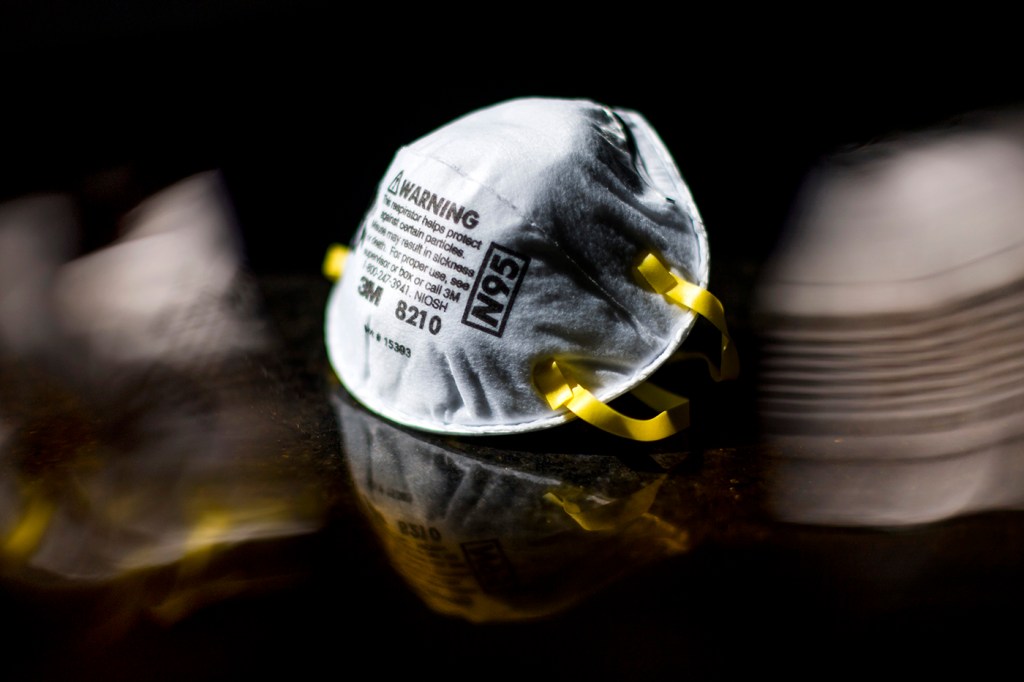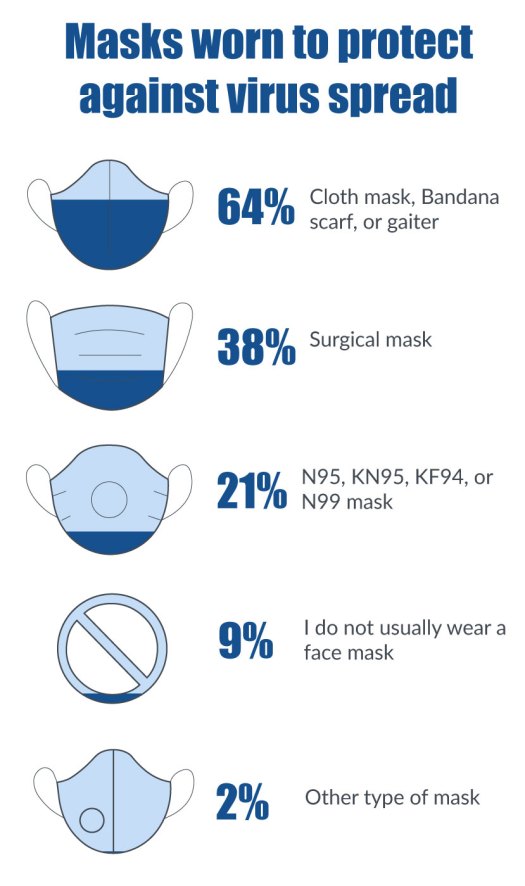N95, bandana, or something in between: Which masks are the most popular?

N95? Gaiter? Bandana, or blue surgical mask? Which one do you wear?
Pandemic researchers, looking to shed light on current masking behaviors of U.S. residents, found that cloth masks, scarves, bandanas, and gaiters remain the masks of choice for 64% of the population, according to a study by the Covid States Project, a collaborative research effort by Northeastern, Harvard, Northwestern, and Rutgers.

‘With an N95, if it’s fitted properly and you go to the supermarket, it’s very unlikely you’re going to get infected,’ says David Lazer, distinguished professor of political science and computer and information science. Photo by Adam Glanzman/Northeastern University.
The next most popular were surgical masks, worn by 38% of respondents, followed by just 21% who wore higher-quality respirators such as the N95. Nine percent said they didn’t wear a mask at all.
The findings suggest that people should be more choosy and opt for the N95s because of their superior filtering capacity, says Northeastern’s David Lazer, university distinguished professor of political science and computer science, and one of the study’s authors.
“With an N95, if it’s fitted properly and you go to the supermarket, it’s very unlikely you’re going to get infected,” he says. “A cloth mask is better than not wearing any mask, but you can still get infected.”
Many people were already aware of the N95’s advantages, which could explain why more than half of respondents in the national study were under the impression that they were backed by the Centers for Disease Control and Prevention. They aren’t.
At the time the survey launched, shortly after Christmas, the public health agency actually discouraged the general public from wearing N95s as a precautionary move to guard against shortages. But days after the survey concluded in early January, the CDC updated guidance to say that Americans can choose to wear the medical-grade mask or its equivalent if they want to.
Loosely-woven cloth masks provide the least protection, while layered, finely-woven products offer more, the CDC now says. Snug-fitting surgical masks and N95s are more protective than all cloth masks, it adds.
The revised language now says that “a respirator may be considered in certain situations and by certain people when greater protection is needed or desired.” Previous recommendations said people may choose to use a disposable N95 respirator instead of a mask “when supplies are available.”
The Northeastern-led study found that 56% of U.S. residents said they were paying close attention to CDC recommendations in recent days, a sharp drop-off from the 80% who deeply absorbed every word in December 2020. Today, however, nearly one-quarter (26%) aren’t even sure what type of mask the CDC recommends, the latest findings showed.
This may suggest messaging confusion that could undermine the agency’s credibility, Lazer says. “There’s a communication challenge for the CDC,” he says.
Beyond the public’s understanding of federal mask recommendations, the study also delved into the mask-wearing habits of more than 11,000 people according to their political leanings, education levels, income, and vaccination statuses.
Researchers found that Democrats wore any type of mask—cloth, surgical, or N95—at significantly higher levels than Republicans. GOP respondents who didn’t wear masks at all substantially outpaced Democrats by a solid 17 percentage points.
Vaccinated and unvaccinated people, meanwhile, both preferred a cloth mask over other coverings, the study found. However, people who don’t wear a mask are significantly more likely to be unvaccinated than vaccinated: 23% of unvaccinated people don’t wear one, compared to 4% of vaccinated people.
For media inquiries, please contact media@northeastern.edu.





